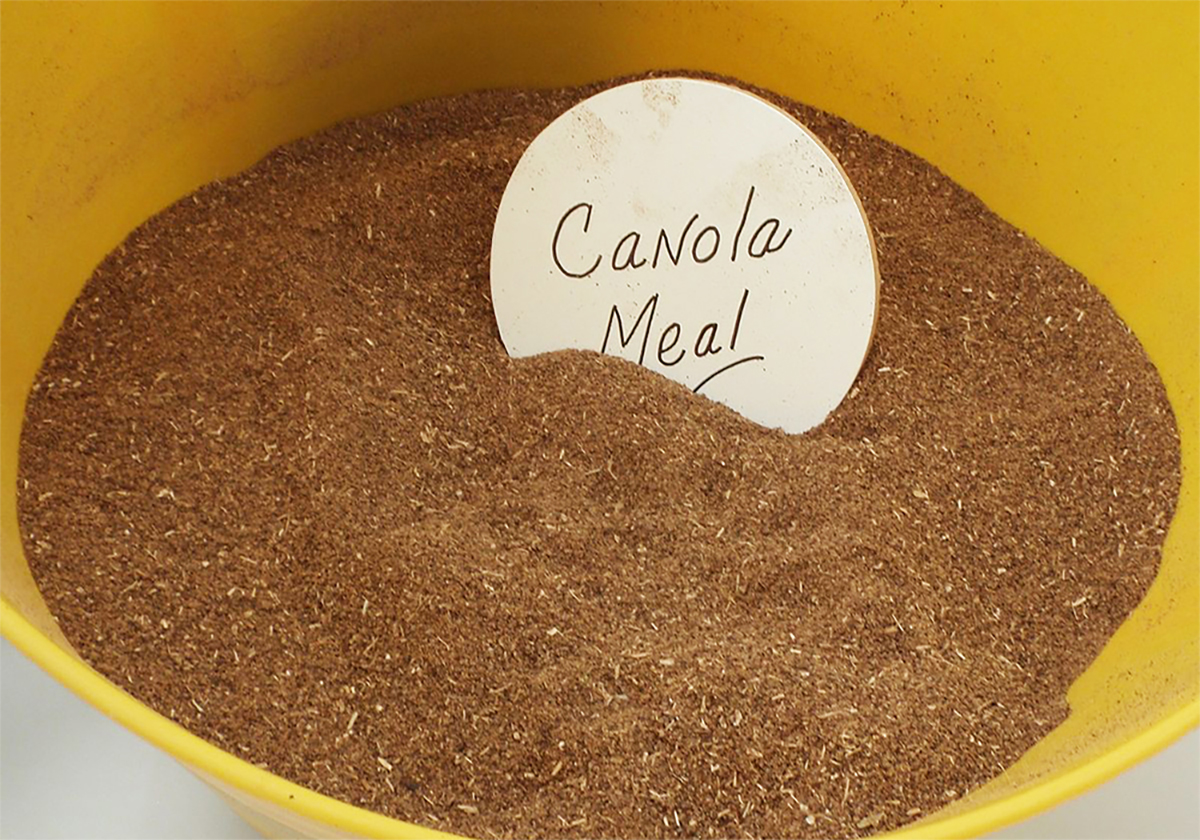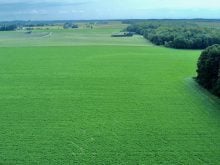Glacier FarmMedia – Edmonton researcher Emma Stephens is on a mission to revolutionize agriculture, not through new crops or technologies, but by reimagining waste.
She’s exploring the “circular economy” for canola and other agricultural products, aiming to transform discarded byproducts into valuable resources and create a more sustainable and profitable future for farmers.
Stephens, a research scientist and economist with Agriculture Canada, said the phrase “circular economy” refers to waste management and recycling.
Read Also

New coal mine proposal met with old concerns
A smaller version of the previously rejected Grassy Mountain coal mine project in Crowsnest Pass is back on the table, and the Livingstone Landowners Group continues to voice concerns about the environmental risks.
“But it’s more than just finding ways to manage byproducts from agriculture. The circular part is recognizing that these byproducts, that currently may be classified as waste byproducts, like crop residues, could be transformed into additional, valuable products,” she said.
The idea of applying a circular economy to agriculture is not new , said Stephens.
“There’s always opportunity, and just a long history of reincorporating manure, reincorporating green manure and crop residues back to the land to harvest nutrients.”
The project is expanding beyond the farm level and looking for additional opportunities across agri-food value chains to recover valuable resources and nutrients for the agricultural sector.
Instead of exploring every agricultural value chain, Stephens and her research team have started looking at canola.
“Canola has a long history of taking canola meal, which used to be just a waste byproduct from canola crushing. It’s been discovered to be quite valuable as a feed ingredient for our livestock sector. They’ve taken a previous process that wasn’t a loop and then found a very valuable way to reincorporate or upcycle those prior waste products into another productive purpose,” she said.
The main research question of the project is to see if there are other opportunities along the value chain that would be as successful.
However, researchers need a more standardized data platform to look at value chains for potential additional byproduct opportunities, she said.
In April 2025, the researchers will enter the third and final year of this project.
“We’ve spent the past two years working on harmonizing data resources that are currently spread across Agriculture and Agri-Food Canada, Statistics Canada and industry sources to mesh them together into an agri-food picture,” she said.
The researchers have been identifying different data sources and developing formulas and processes to have primary production talk to the manufacturing sector.
“In the case of canola, it would be on the crushing side,” she said.
“We know from one set of data how much canola is produced in a given year all across Canada. With data from the oilseed sector, we know how much is crushed versus how much is exported, for example, but those two data sources are distinct right now,” she said.
Both data sources draw from similar foundational information, but they don’t easily talk to one another.
“We’re trying to link up information that we have across different stages, like production, processing, transportation, domestic consumption and then our trade sector, to trace our resource flows across value chains. It’s taken some time to assemble those resources,” Stephens said.
“We’re interested in not just statistical information, but spatial information, because our production areas and our consumption areas, for example, are separated by large distances. We are trying to figure out not just how many resources flows are out there, or what resources we have, but also where they’re concentrated. That will be our best opportunity to upcycle if we know there’s a concentration in this area that has not currently been developed for additional value-added opportunities that could be developed because it’s a large enough concentration to make it make sense economically.”
Stephens said the project can bring resources back to primary producers, with the goal of alleviating input costs.
“If we’re able to find additional nitrogen resources across our value chain and bring them back to agriculture, it should help in this time period where we’ve had a big increase in fertilizer costs,” she said.
Phosphorus is similar, she added.
“It’s a limited resource and we have to apply a certain amount every year, and then a lot of it gets lost farther down the chain, particularly in our urban waste streams.”
Stephens also said there is literature from other places on the amount of resources that can be harvested.
“But we don’t have enough analysis about the Canadian context to have a similar number. We hope our work can give us a bit more of that number, and then we can find ways to bring those resources back to producers, so that should help them with their financial bottom line,” she said.
There could also be environmental benefits for producers.
“I think, on the fertilizer side, that’s an important consideration. In terms of greenhouse gases, it would be using existing nitrogen and phosphorus rather than producing new inorganic fertilizer which minimizes environmental costs associated with primary production,” she said.
“The circular economy is just recognizing that we, economically, have needs and demands, and so we need to keep producing goods and services to maintain our standard of living, but it’s possible to continue to produce those things without harvesting additional primary resources. I think that should help improve the sustainability of all our economic activities.”
In agriculture, many people realize soil nutrients are limited.
“I know quite a few producers who are really interested in soil health and finding a way to continue to produce agricultural goods and services while minimizing extraction of resources. We’re on the data side of things. These are my hypotheses based on the existing literature. We haven’t put the data together yet to know what the magnitude of those potential gains could be,” she said
“This represents a new way of thinking about production, but if we want to do it, we need a lot more information about our current practices that are maybe not circular, if we are thinking of transforming them into something more circular.”
Stephens said primary producers are already thinking this way.
“They recognize these circles and interdependencies, but we’re extending it to the value chain, which is new for Canada,” she said.
“I guess we’re hoping with the data platform that we’re putting together that we can help more people find each other and find those opportunities.”


















